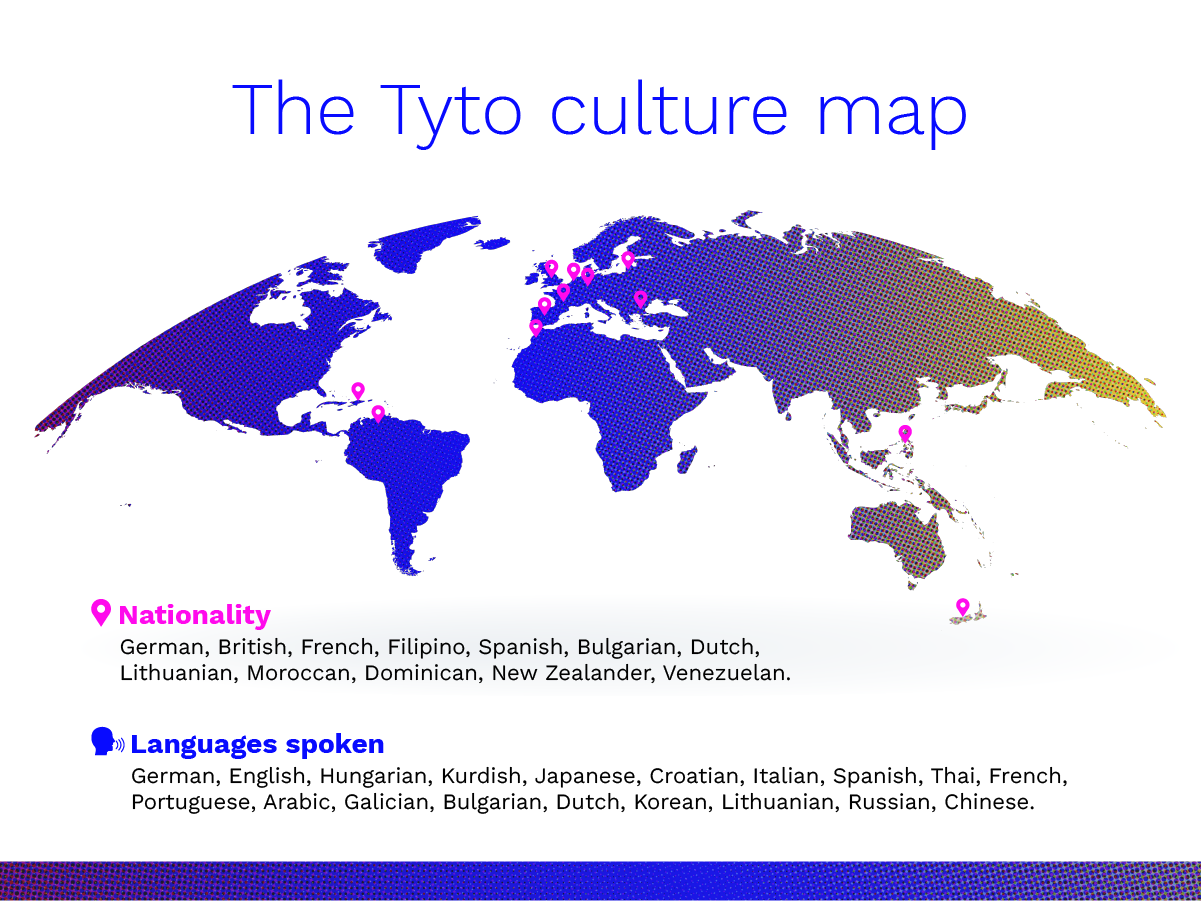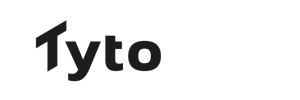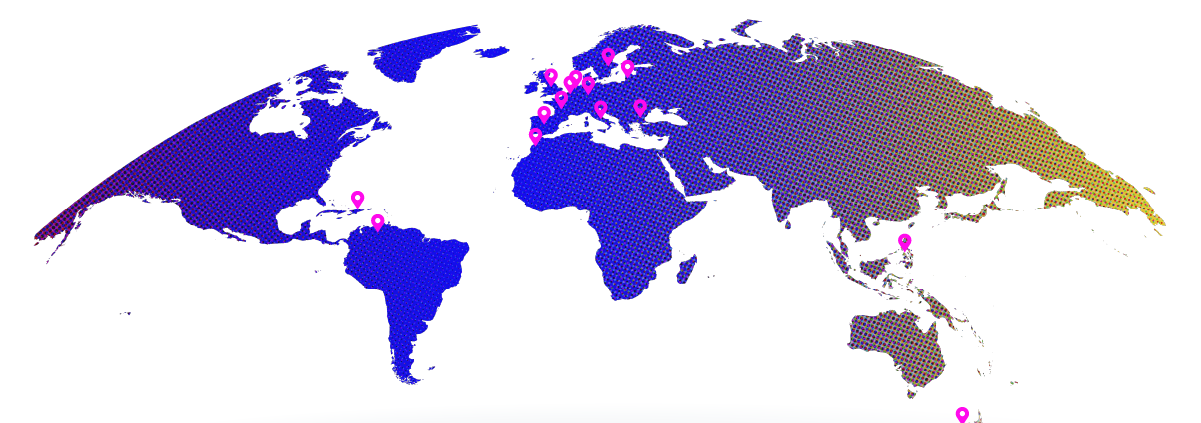Breaking boundaries in the workplace: Cultural awareness leads to cultural connections
At Tyto, we are a pan-European agency made up of colleagues from across 6 countries, speaking 19 languages, with 12 different nationalities, and bringing together this diversity means that we are a truly multicultural group, with varied experiences and perspectives. Given we work with clients across the globe, the way we communicate both internally and externally is key to our growth and success. In this context, cultural awareness is a must for global teams and when embraced it unlocks the best of Tyto in terms of our culture, creativity and ultimately our client outcomes.
Bridge the cultural gap in business
Culture awareness is critical in business; what is considered good communication in one culture does not always carry across to another. This concept is well-explored in “The Culture Map” by Erin Meyer, Professor at INSEAD and a specialist in organisational behaviour. In this book, Professor Meyer embarks on the study of cultural differences in the professional world and how these can influence management. With numerous examples and anecdotes, she analyses these cultural differences along eight scales and suggests ways to improve collaboration with people from different cultures. According to the author, recognising that one’s way of doing things is different from that of the other person is already a step towards better communication.
In a nutshell, here are the key takeaways:
- Communication: being a good observer and ‘reading the air’ is sometimes more important than being direct.
- Feedback: considering cultural background helps in getting the message across. For example, giving feedback can be perceived as offensive in certain contexts.
- Persuasion: considering how people articulate ideas can help in being more convincing when attempting to convey one’s own ideas.
- Hierarchy: two models stand out: a hierarchal vs. an egalitarian culture: thought leaders need to adapt their styles to the culture to ensure that they communicate their messages effectively at all levels.
- Decision-making: again, two opposite models exist: consensual vs. top-down. Understanding culture’s decision-making processes is key to implementing ideas.
- Trust: it is important to understand how relationships and trust are built across cultures. Is it transactional, based purely on tasks, or more so via personal and emotional connections…?
- Disagreement: there is a fine line between debate and hostility… in the case of differing opinions, taking time to showcase that it is related to the idea (as opposed to the person) is particularly important in some cultures
- Scheduling: despite people’s different cultural approaches to timings and deadlines, you cannot go wrong by being on time.

Language plays a huge part in building our cultural awareness
At Tyto, we understand that language is one of the essential parts of culture, and of our work as communication professionals. Today, on the European Day of Languages, we are proud to be part of such a diverse and multilingual team. This is why we try to find shared ground and foster awareness, but also emphasise our uniqueness to get to know each other better and understand where we come from.
As a fully remote agency, we use all available tools to foster a cohesive and inclusive culture. We have specifically set up a Slack group called tyto_language-dictionary that opens the doors to the worlds of our colleagues and their ways of speaking. Whether in French, English or German, our language knowledge is constantly being updated with the curiosities of our team.
Our German colleagues have recently pointed out what “eierlegende Wollmilchsau‘” could mean in English. Literally translated, it means ‘egg laying wool milk pig’, but the expression in fact refers to a person or sometimes also a solution that can do so many things at once but is impossible to find. My French-speaking colleagues have also mentioned an expression that impressed the rest of the European team. When we want a dash of milk in a cup of tea or coffee, we ask for «un nuage de lait», which directly translates to «a cloud of milk». We love to be made aware of the expressions we use on a daily basis that are unique to our language and our culture.
Another purpose of our language dictionary channel is to broaden the knowledge of all teams about our common and operational language, English. We have been entertained with explanations of business expressions such as a «helicopter view«, which now we all know can be easily translated as an overview or a general description of something. Or perhaps a «ballpark figure«, that we have now learned means an estimate, even if at first glance it may sound more like a sports forecast than a business concept. Never a dull language moment, one could say! By learning about these particular expressions, some more celestial than others, we enrich our knowledge of our peers and their cultures while promoting an inclusiveness that is essential in our diverse, multi-faceted, pan-European team.



